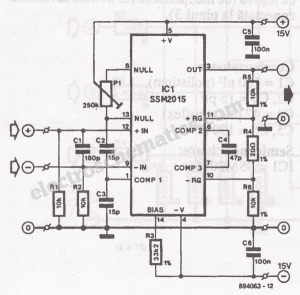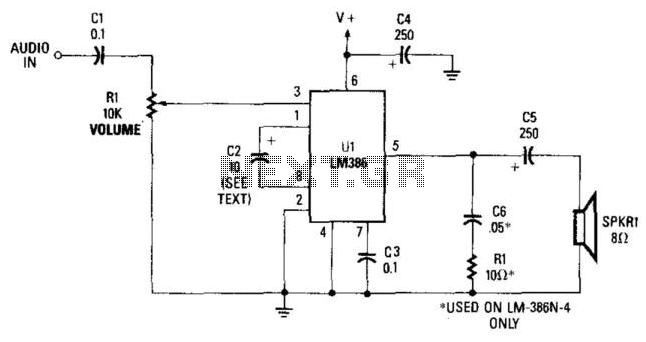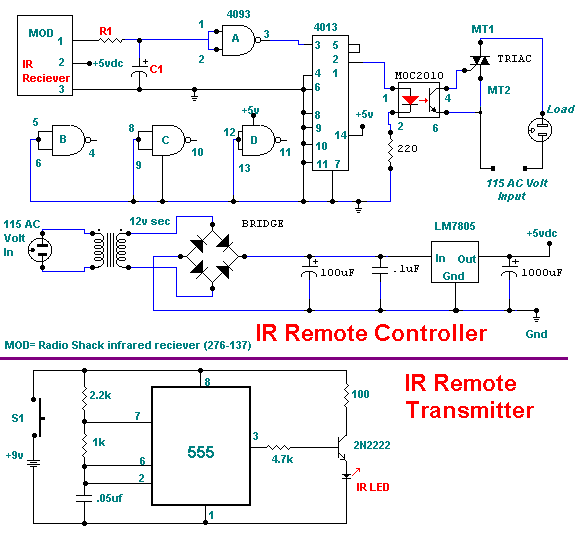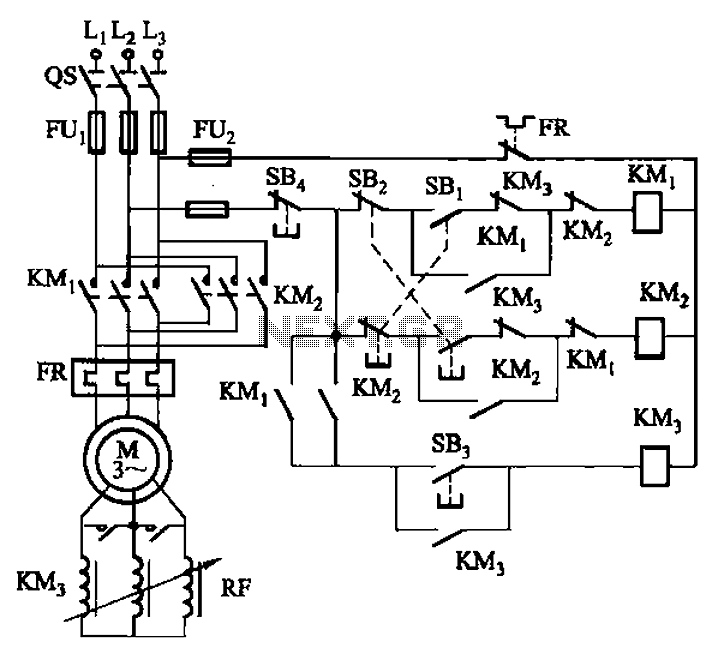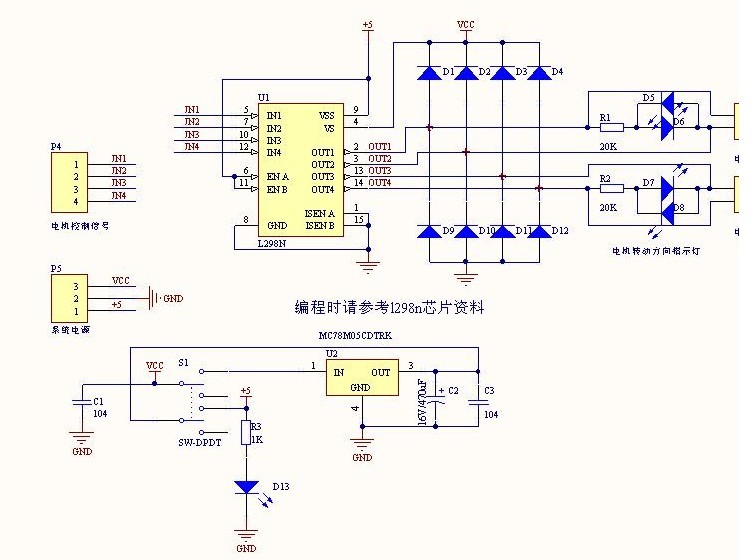
Composed of T630/T631 long-wave wireless remote control circuit diagram
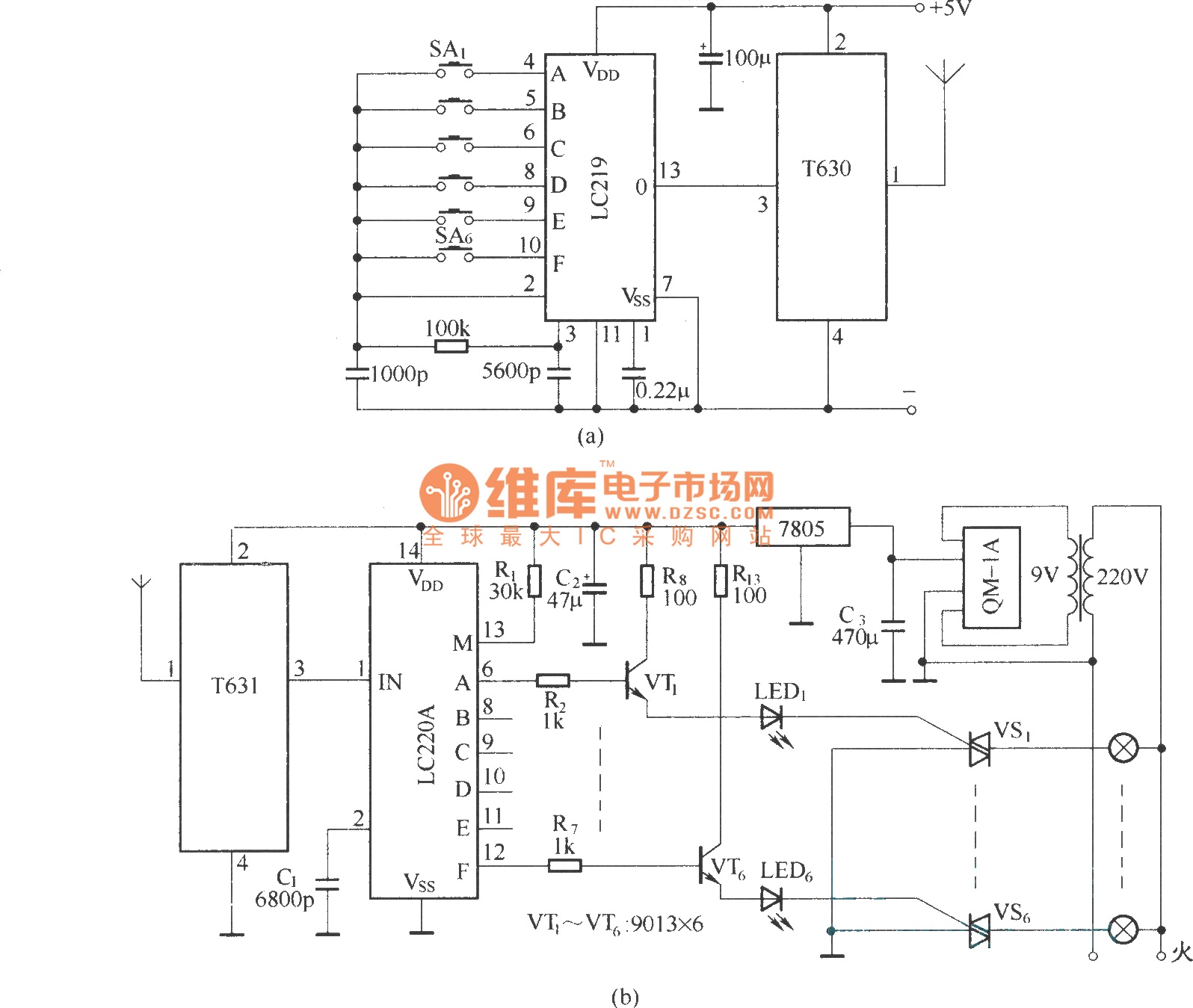
The circuit utilizes the long-wave wireless transceiver T630/T631 to manage a 6-channel load. It is characterized by low power consumption, high resistance to interference, and a simple structure.
The circuit design incorporates the T630/T631 transceiver, which operates in the long-wave frequency range, facilitating reliable communication over extended distances. The transceiver is configured to control a 6-channel load, allowing for versatile applications in remote control systems, automation, and various wireless telemetry tasks.
The low-power feature of this circuit makes it suitable for battery-operated devices, extending operational life while maintaining effective performance. The high anti-interference capability ensures stable communication even in environments with significant electromagnetic noise, which is crucial for applications where reliability is paramount.
The simple structure of the circuit not only simplifies the design process but also enhances ease of maintenance and troubleshooting. The transceiver connects to a microcontroller or a similar control unit that manages the switching of the load channels based on the received signals. Each channel can be independently controlled, enabling various configurations for different applications, such as lighting control, motor activation, or sensor data collection.
Overall, this circuit presents a practical solution for implementing wireless control systems, combining efficiency with robustness in design.The circuit uses the long-wave wireless transceiver T630/T631, controlled 6-channel load. The features are low-power, high anti-interference ability and simple structure etc.. 🔗 External reference
The circuit design incorporates the T630/T631 transceiver, which operates in the long-wave frequency range, facilitating reliable communication over extended distances. The transceiver is configured to control a 6-channel load, allowing for versatile applications in remote control systems, automation, and various wireless telemetry tasks.
The low-power feature of this circuit makes it suitable for battery-operated devices, extending operational life while maintaining effective performance. The high anti-interference capability ensures stable communication even in environments with significant electromagnetic noise, which is crucial for applications where reliability is paramount.
The simple structure of the circuit not only simplifies the design process but also enhances ease of maintenance and troubleshooting. The transceiver connects to a microcontroller or a similar control unit that manages the switching of the load channels based on the received signals. Each channel can be independently controlled, enabling various configurations for different applications, such as lighting control, motor activation, or sensor data collection.
Overall, this circuit presents a practical solution for implementing wireless control systems, combining efficiency with robustness in design.The circuit uses the long-wave wireless transceiver T630/T631, controlled 6-channel load. The features are low-power, high anti-interference ability and simple structure etc.. 🔗 External reference
